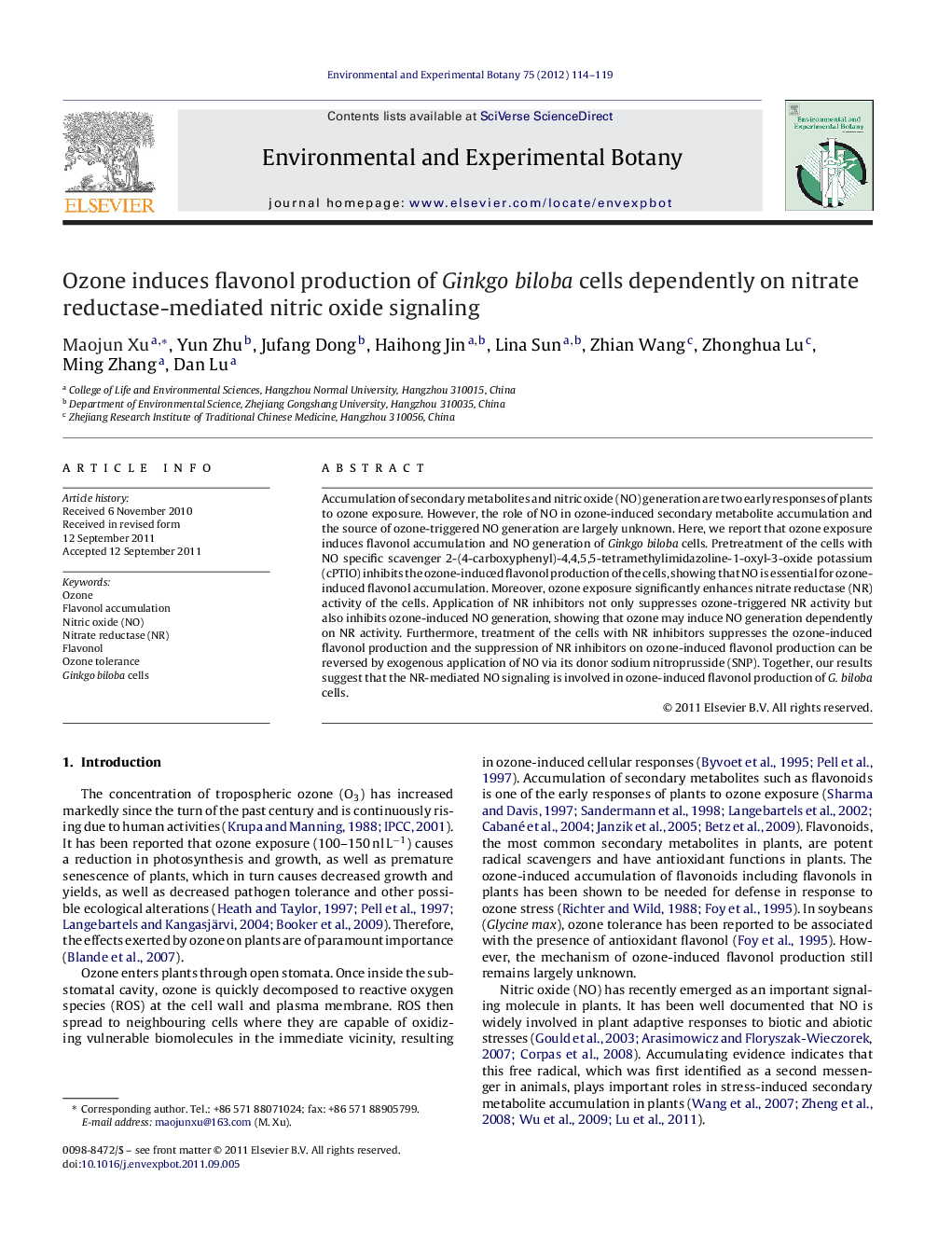| Article ID | Journal | Published Year | Pages | File Type |
|---|---|---|---|---|
| 4554839 | Environmental and Experimental Botany | 2012 | 6 Pages |
Accumulation of secondary metabolites and nitric oxide (NO) generation are two early responses of plants to ozone exposure. However, the role of NO in ozone-induced secondary metabolite accumulation and the source of ozone-triggered NO generation are largely unknown. Here, we report that ozone exposure induces flavonol accumulation and NO generation of Ginkgo biloba cells. Pretreatment of the cells with NO specific scavenger 2-(4-carboxyphenyl)-4,4,5,5-tetramethylimidazoline-1-oxyl-3-oxide potassium (cPTIO) inhibits the ozone-induced flavonol production of the cells, showing that NO is essential for ozone-induced flavonol accumulation. Moreover, ozone exposure significantly enhances nitrate reductase (NR) activity of the cells. Application of NR inhibitors not only suppresses ozone-triggered NR activity but also inhibits ozone-induced NO generation, showing that ozone may induce NO generation dependently on NR activity. Furthermore, treatment of the cells with NR inhibitors suppresses the ozone-induced flavonol production and the suppression of NR inhibitors on ozone-induced flavonol production can be reversed by exogenous application of NO via its donor sodium nitroprusside (SNP). Together, our results suggest that the NR-mediated NO signaling is involved in ozone-induced flavonol production of G. biloba cells.
► Ozone exposure induces flavonol accumulation and NO generation. ► NO is essential for ozone-induced flavonol. ► NR is responsible for ozone-triggered NO generation. ► Ozone-induced flavonol production is dependent on NR-mediated NO signaling.
